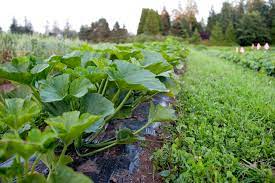
Agriculture, the mainstay of human civilization, encompasses numerous sports that contribute to manufacturing food, fibre and other crucial sources. Deeply intertwined with cultural, financial and ecological dimensions, these activities are key in sustaining groups and shaping our arena.
This essay explores the multifaceted nature of agricultural activities, delving into farming practices, animal husbandry, sustainable tactics, demanding situations and wider implications for society.
Cultivation practices
Cultivation is the middle of agricultural sports. Soil practice and cultivation, planting seeds, developing plants and harvesting are critical steps in the adventure from source to desk. Different areas and climates determine the varieties of plants which can be grown, main to a superb style of agricultural practices around the arena.
Traditional techniques regularly exceed from technology to era and coexist with modern-day techniques driven by technological progress. Conventional cultivation involves ploughing and ploughing to create appropriate soil conditions for planting.
However, sustainable practices, which include no-until farming and cover plants, have gained traction due to their potential to lessen soil erosion, improve soil fitness and mitigate environmental impacts.
Livestock
Animal husbandry is another essential part of agricultural sports, including cattle care, breeding and control. Livestock, with livestock, fowl, sheep and pigs, provide not the most effective meat but dairy, wool and different products. Farmers interact in sports along with feeding, housing and disease management to ensure the proper being of their animals.
Approaches to animal husbandry vary widely, from large grazing systems to intensive commercial operations. Using machines like Mahindra 275 in the fields has helped the farmers in crop production, better income and many more. Sustainable animal husbandry practices emphasise moral handling, access to open areas, and accountable waste management to minimize negative environmental influences.
Sustainable agriculture techniques
Awareness of environmental impact has brought about adopting sustainable agricultural methods that stabilise manufacturing with ecological health. For instance, organic farming avoids synthetic insecticides and fertilizers and makes a speciality of herbal techniques to grow soil fertility and reduce chemical contamination. Agroforestry integrates timber and vegetation, promotes biodiversity, conserves soil and mitigates weather trade.
Powered by technology consisting of GPS and sensors, precision agriculture lets farmers tailor inputs, including water and fertilizer, exactly to the desires of each plant, decreasing waste and optimising yields. These processes constitute a shift closer to extra sustainable and ecological agricultural practices.
Benefits of agricultural practices
Agriculture offers various advantages that undoubtedly affect people, communities and societies. The main benefits of agricultural activities include:
Food production:
Agriculture is the number one supply of food for people around the world. It ensures a regular supply of fruits, veggies, grains and animal merchandise essential for nutrients and nutrients.
Economic gain:
Agriculture plays a key function in economies and employs millions of people. It generates profits for farmers, workers and agricultural businesses, contributing to rural development and monetary increase. Farmers use Mahindra 475 tractors for the betterment of their fields.
Rural Livelihood:
Agriculture helps livelihoods in rural regions where an enormous part of the populace depends on agriculture. It facilitates reduced poverty and provides opportunities for households to earn a residing.
Preserving tradition:
Agricultural practices frequently have cultural significance, preserving traditions, customs and know-how from generation to technology. It allows preserving cultural variety and heritage.
Environmental Stewardship:
Sustainable agricultural practices include crop rotation, agroforestry and organic farming selling, soil health, lessening eros, and conserving water resources. These practices contribute to preserving a balanced ecosystem.
Protecting biodiversity:
Farms can function as habitats for diverse vegetation and animals. Maintaining numerous vegetation and natural regions on farms contributes to biodiversity conservation.
Carbon sequestration:
Some agricultural practices, along with cowl cropping and agroforestry, help capture atmospheric carbon dioxide and store it in soil and plant life, thereby contributing to climate alternate mitigation.
Economic stability:
Agriculture offers a solid base for economies as it is less liable to rapid fluctuations in comparison to other sectors. Food is a primary necessity that ensures a consistent call for agricultural products.
Challenges confronted
Agricultural sports face several demanding situations encompassing monetary, environmental and social fields. Climate trade, manifested through unpredictable climate, extreme activities and converting growing seasons, threatens agricultural stability. Adapting plants and practices to those modifications is a pressing trouble.
Land fragmentation, mainly in growing nations, hinders the adoption of present-day techniques and economies of scale.
Access to credit, era and markets remains a mission for smallholder farmers, hindering their capacity to enhance productiveness and livelihoods.
In addition, water shortage, land degradation and lack of biodiversity are problems that require urgent interest. Unsustainable agricultural practices can exacerbate these problems, main to reduced yields and decreased capability to feed growing populations.
Implications for society
The importance of agricultural activities goes far past the bounds of fields and barns. Agriculture stays the cornerstone of economies and provides livelihoods for millions around the arena. In growing countries, wherein an extensive part of the populace depends on agriculture, agricultural activities are critical for poverty reduction and rural improvement.
Cultivating a closer connection between customers and farmers is more and more crucial. Consumers are more involved in the source of their food, the conditions wherein it turned into produced and its impact on the environment. As a result, practices together with community-supported agriculture and farmers’ markets are gaining recognition and promoting an experience of transparency and sustainability.
Conclusion
Agricultural sports encompass the art and technological know-how of cultivating the bounty of the Earth. From the moment the seed is sown to the harvest that graces our tables, the journey entails a symphony of moves, including cultivation, animal care and sustainable stewardship. The significance of accountable and sustainable agricultural practices cannot be overstated as we address the demanding situations of changing weather, a developing worldwide populace, and an evolving food environment.
The manner forward lies in fostering innovation that respects lifestyle, harnessing generation for performance without compromising ecological integrity, and promoting equitable get admission to sources and markets. By recognising the complicated interaction among agricultural sports and the properly-being of individuals, groups and the planet, we can pave the way for a destiny in which the bounty of the Earth is nurtured with awareness, care and sustainability.



